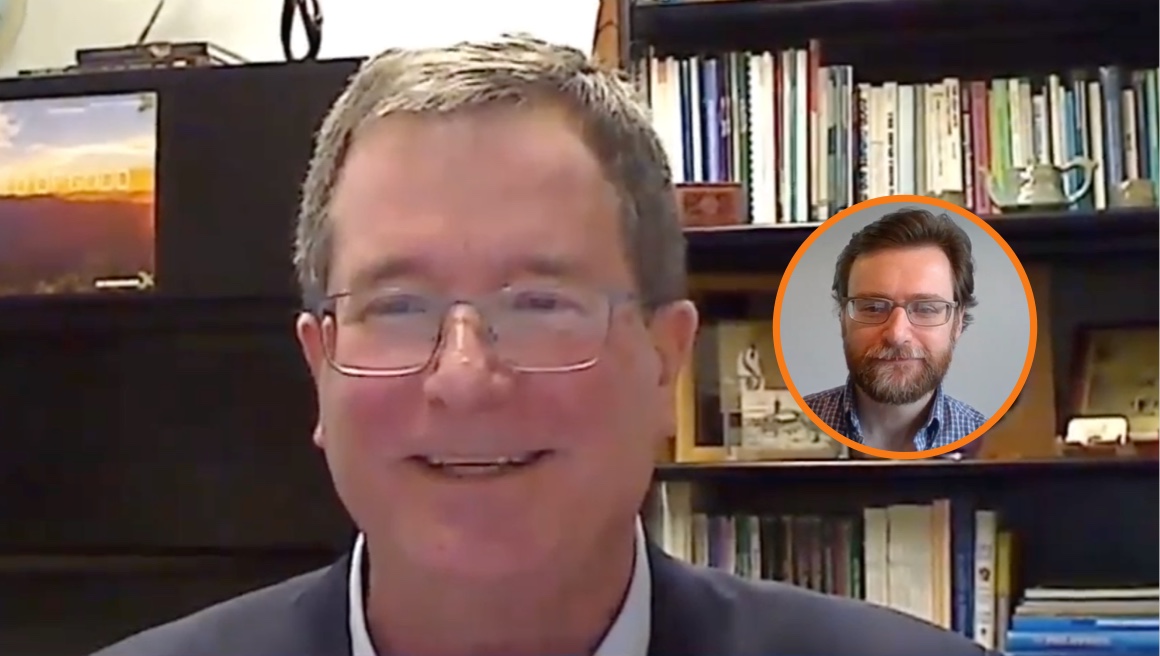

Global branding refers to the management of a brand in different regions of the world to increase its strength and recognition in the markets where it operates. And if you successfully market your global story and create an excellent global brand, you will attract more people and grow.
But creating a global brand takes a lot of work. It is not enough to advertise and invest money in marketing. You have to get to know the market, determine the target groups and offer them what they need. However, above all, you have to be original and bring something new and attractive.
In this episode of Global Engagement Insights, our host David Sanderson welcomes Jeffrey Riedinger, Vice Provost for Global Affairs at the University of Washington. Jeff explains how to craft a good global story and share it. Jeff and David discuss the importance of using real-time data and what kind of data the University of Washington provides to faculty members and students.
Name: Jeffrey Riedinger
What he does: Jeff is the vice provost for Global Affairs at the University of Washington.
Company: University of Washington
Noteworthy: Jeffrey has been a global educator for the last 40 years. He is the vice provost for Global Affairs at the University of Washington and has leadership and administrative responsibility for the university’s diverse global programming, including support for international research, study abroad, student and faculty exchanges, and overseas centers. He also serves on the faculty of the University of Washington School of Law and the Sustainable Development LL.M. program.
Where to find Jeffrey: LinkedIn
“One of the many barriers to being globally engaged as a faculty member, whether it’s in research or teaching, or in gracing work in communities, is simply knowing who else is doing what in a related vein in the same geography across this huge campus.
But the same is true for our students — to tell stories not simply about how they could get on an airplane and study abroad halfway around the world, but they can have global experiences on Native American reservations, which, after all, are sovereign nations.
So, we can create global experiences, but we need to know what those opportunities are, share them, who is already doing what so that others can see themselves as doing this same thing — whether it’s studying abroad or engaging in research abroad or internships and the like. So, with that in mind, it was said about trying to inventory, ‘What data did the university already have? What was it already collecting?’ Because doing one-off surveys of faculty or students and the like is not a sustainable, easily replicable model.”
“We’re now in a period — and have been for some time — in a period of rising nationalism, of growing great power, competition, of concerns about research security involved in international research collaborations. And at the same time, on many of our campuses, the focus is not on comprehensive internationalization but much more emphasis on how global engagement — whether it’s in research or education or community-based initiatives — how does that advance other institutional priorities. So I’m not looking for a standalone comprehensive internationalization agenda at the university. I’m looking at how our global engagement drives these others and helps advance these other priorities. That said, I still want to be highly visible. And so, some of that is you click on our main web page, you click on the ‘About’ button, and one of the things that’s in that dropdown menu is our global impact. And that leads you to a single page that is our best effort — quantitatively and qualitatively — and with great graphics to tell a summary of our global story.”
“If any part of the brand can have a global piece, embrace it. A dedicated position would be ideal, but at a bare minimum, when you consider hiring IT people, consider their data analytics expertise. That’s been invaluable to us. Have somebody who could actually work with the data once you make it available. I’d start with what data does your office already have access to. International offices tend to have information on international students, student exchanges, study abroad. That may be it, but start with that. Figure out what you can do with that data and what stories you can pull out of them. Then do as we did. Find out who’s keeping what data across the rest of the university that might actually bear on and have something to do with the global story, and become their friends. Build a network, and if the cost of all of that is a lunch every couple of months or something, whatever it takes. I would strongly advise you to use existing campus databases as the data source.”
